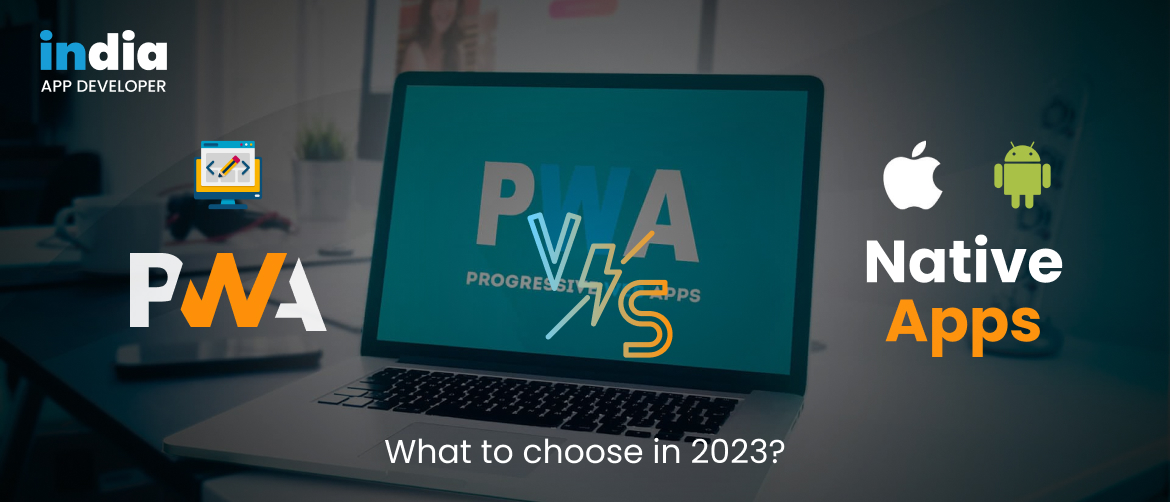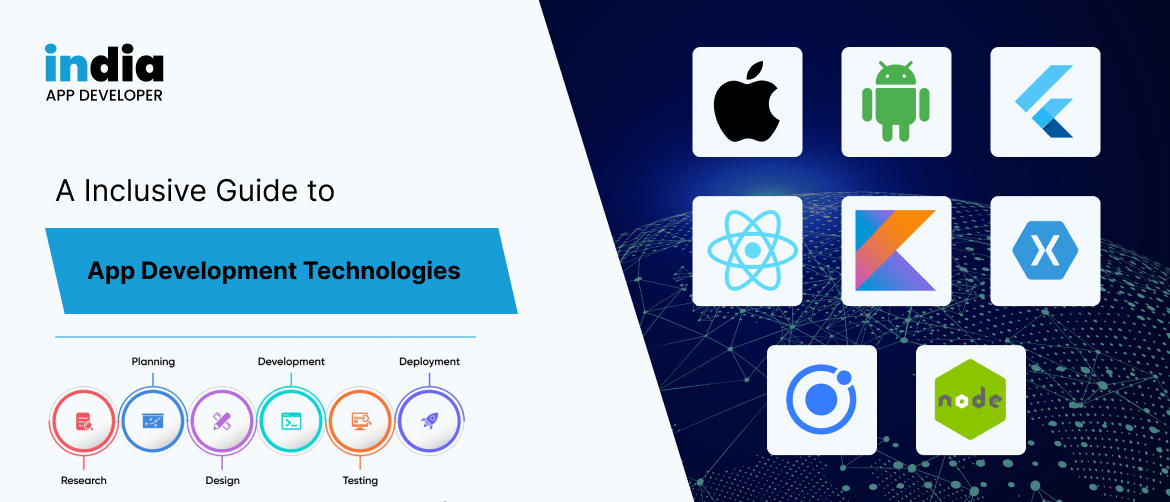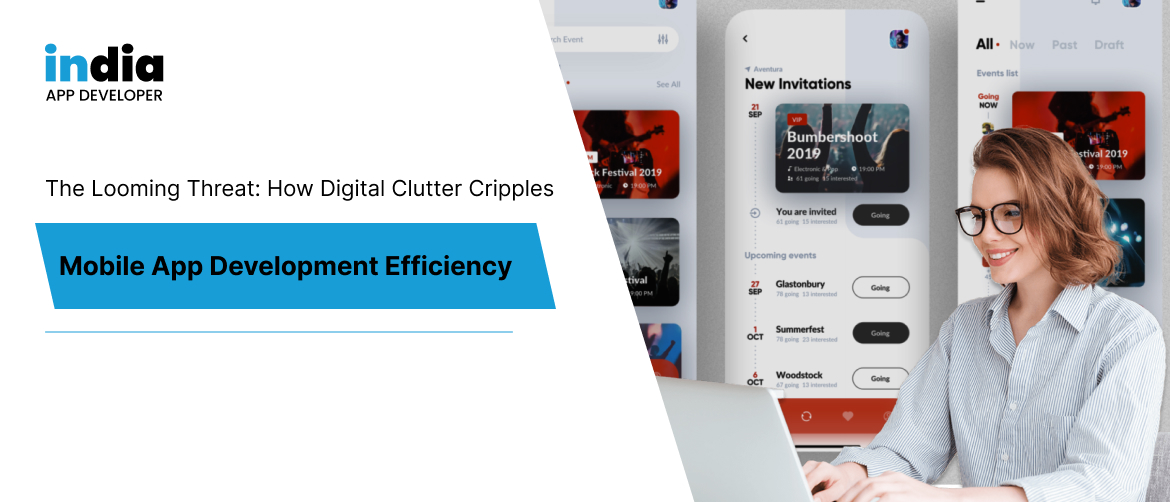At times, it can be difficult to choose between native app development and progressive web app development. Both approaches have unique benefits that can help a firm. But which one will fit your company’s concept and make a huge impression? Continue reading to know more about the ultimate clash between PWA and native apps, which is about to get heated!
Smartphones have fundamentally changed the dynamics of how businesses and their customers interact with one another, flipping the world on its head. This has put us in a position where imagining a growing firm without taking into account the smartphone market would be difficult. When it comes to organizations that have their ducks in a row with their business mobile applications, users have it easy because it promises a flawless experience with all the bells and whistles they have to offer.
While native applications have all the bells and whistles, offering a first-rate user experience and cutting-edge functionality, progressive web apps allow you to purchase at lightning speed, save money, and connect with consumers across several platforms. PWAs are simple to use because they don’t need to be downloaded from an app store, whereas native apps are a whole different story. Which one wins the battle for businesses and developers when it comes to progressive web apps versus native apps?
Should you spend your money on a progressive web app or stick with a native app like glue? We’ve put up this guide to weigh the benefits and drawbacks of native applications versus PWAs, so you can decide what’s best for your business while not overlooking what people would truly like. You can hire App Developers Melbourne for a complete technology consultancy.
What is a progressive web application?
A progressive web application, abbreviated as PWA, is not a typical app in the conventional sense. It is an app-imitating website designed and optimized to perform like a mobile application. In other words, PWAs are more user-friendly than traditional web pages, but you don’t need to download them from app stores. It’s enough to find them through browsers and use them right away.
We know that it’s better to see once than to read the definition over and over again.
Key Advantages of Progressive Web Apps (PWAs)
Several factors make Progressive Web Apps a compelling choice:
1. No Installation is required.
PWAs eliminate the need for users to download and install apps. They can simply access the PWA site via a web search and start using it immediately. Users can also opt to “Add to Home Screen” for quick future access.
2. Offline Accessibility
PWAs allow users to access content in offline mode, even in areas with poor connectivity. These apps cache or store material that has already been used so that it can be used offline. This makes it easier for users.
3. Search Engine Optimization
PWAs are SEO-optimized, so search engines can quickly find them. This tool has the potential to greatly boost your brand’s internet presence.
4. Cross-Platform Support
PWAs can run on different platforms using a single codebase, which reduces development complexity and expenses. Responsive design guarantees that upgrades or modifications are reflected consistently across all devices that use the same version of the app.
5. Requirements for Minimal Development
PWA development is both cost-effective and fast. It simply requires HTML, JavaScript, and CSS, making it a less costly choice than native apps.
PWA and Native App Success Stories
Let’s explore some successful examples to better illustrate the impact of PWAs and native apps:
Progressive Web Apps(PWA)
- TwitterLite:
Twitter’s 2017 PWA provided web push notifications, an “Add to Homescreen” prompt, and offline surfing. After this change, tweets increased 75%, bounce rates dropped 20%, and pages per session increased 65%.
- Flipkart:
Flipkart adopted its PWA in 2015, which increased conversion rates by 70%, re-engagement rates by 40%, and site time by three.
- Starbucks:
Starbucks used PWAs in 2017, increasing order diversity by 23% and daily active users by twice.
- Pinterest:
After introducing its PWA, Pinterest saw 60% more core engagements and 44% more ad income.
Native apps:
- Instagram:
With over 2 billion monthly active users, Instagram is one of the most downloaded apps. The native app lets users share photographs and videos with friends and followers.
- Uber:
Uber’s 2022 revenue was $31.8 billion, up 82.62% from the year before.
- Spotify:
Spotify is the dominant music streaming app, with over 205 million paid customers. Users can listen to their favourites and discover new music.
- Headspace:
Headspace, a meditation and mindfulness software with attractive graphics, will have 1.32 million worldwide downloads in Q4 2022.
Detailed Comparison: PWA vs. Native Apps
Let’s look at different parts of PWAs and Native Apps with India App Developer’s experts to know more about the argument between them:
Written Languages
- PWA: Web browser-based PWAs use HTML, CSS, and JavaScript.
- Native App: Native apps are platform-specific. They use Objective-C and Swift for iOS and Java for Android.
Development Costs
- PWA: A PWA allows a single codebase to work across several platforms. Responsive design makes app updates easy on all devices with the same version. Because of their versatility, PWAs save time and money.
- Native App: Native app development requires separate versions for deployment and supports specialized tech stacks. Due to project complexity, updating Android and iOS apps takes more time and resources.
App Development/Deployment
- PWA: PWA development and deployment are faster than Native apps. Service workers and Lighthouse speed up PWA deployment for a single web development team.
- Native App: Native app development requires distinct teams for Android and iOS, which delays integration of the same features. App store approval can take 2–4 days before app release.
Installing apps
- PWA: Users can view PWAs without downloading or installing. A Google search works fine. Users can “Add to Home Screen” for future access.
- Native App: Finding and downloading native apps from the App/Play Store can take time.
User Engagement
- PWA: User engagement drives company success. Android PWAs feature push notifications, increasing user engagement. This functionality is limited on iOS devices.
- Native App: Push notifications boost user engagement in native apps regardless of operating system or device model.
Ability to access offline
- PWAs: PWAs let consumers view material offline, especially in low-connectivity locations. This functionality only works on previously visited pages.
- Native App: Cache-based native apps ensure constant operation offline.
Device Features Accessibility
- PWA: Because Android smartphones use HTML5, PWAs can’t leverage full mobile device features. Siri, Face ID, Touch ID, in-app payments, and other crucial tools don’t work with iOS PWAs.
- Native App: Native apps can utilise the camera, GPS, microphone, Bluetooth, etc. It allows for more detailed consumer and marketing interactions.
Security
- PWA: A user’s computer determines PWA safety. The browser sandbox protects users’ private information and mobile device hardware.
- Native App: Multi-factor login and platform-specific security features make Google Play and the App Store’s native apps secure.
When to choose a PWA or a native app?
Both PWAs and native applications have advantages and disadvantages, making the decision dependent on your particular business requirements and objectives.
Think about setting up a PWA if:
- You are launching your business and require a simple app immediately.
- You want to encourage customer engagement with SMS notifications.
- Cost and development delays are issues.
- Through SEO optimisation, you intend to expand brand awareness and audience reach.
Think about creating a native app if:
- It is necessary to establish credibility through app store presence.
- You need sophisticated device capabilities for increased functionality.
- You desire to use device data to improve app processes.
In Conclusion
Both PWAs and native apps have pros and cons that make them good for different business needs. Both types will be around for a while, so it’s important to choose the one that fits your project and goals best.
India App Developer is here to help clients make their digital goals come true, whether they want to go the extra mile with Progressive Web Apps or stick with the tried-and-true Native apps. We’ll look after you! If you are looking for the best App Development Australia, please contact our business experts for a full discussion and help on how to find the best solution or app development services. Don’t be shy! We are committed to making sure that your business succeeds by giving you the best option.
 +1 647 637 9108
+1 647 637 9108 +1 917 477 8991
+1 917 477 8991 +61 3 9013 3988
+61 3 9013 3988 +91 93281 27044
+91 93281 27044

























